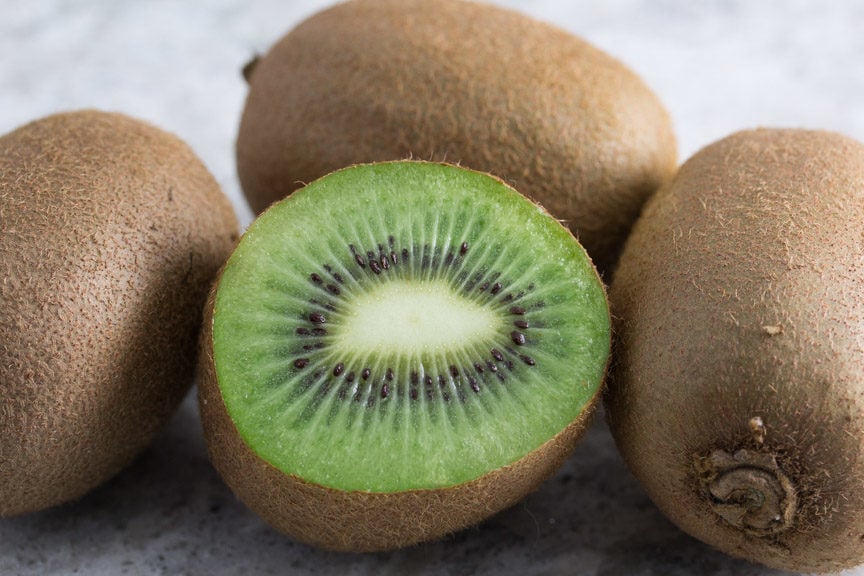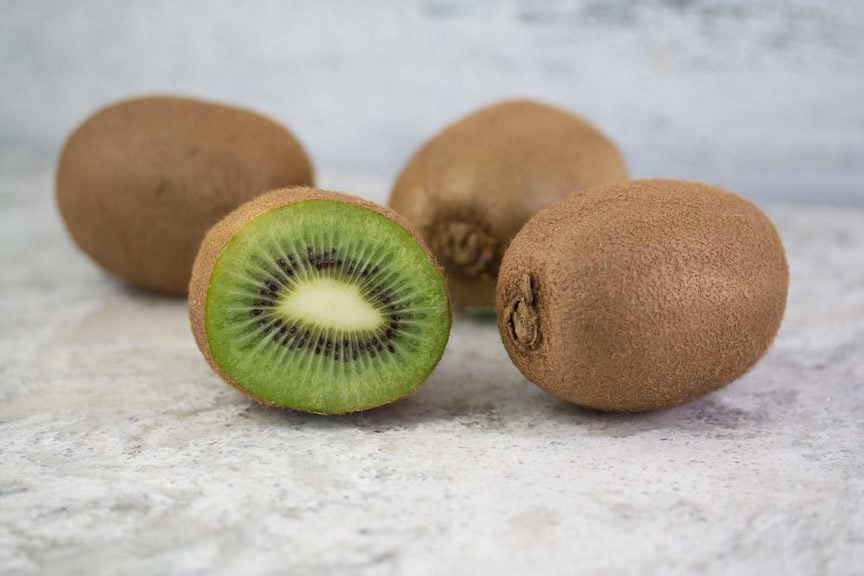About Kiwi Fruit
Monash University suggests a serving of 2 small peeled standard sized kiwi (150 g).
Actinidia deliciosa. There is also the Actinidia arguta, which is the hardy kiwi. But the Actinidia deliciosa is the fuzzy kiwi we all know and love. Also called kiwifruit (to distinguish it from the kiwi bird) or Chinese Gooseberry. We had to write about kiwis, not only because it is our logo, but also because they are just so darned good. Packing in more vitamin C than citrus, these egg-sized fruit are dull brown on the outside and either green or gold inside, with tiny edible black seeds.
The more common green variety also sports some fuzz on the outside, while the gold variety has a much smoother exterior. The flesh is juicy and sweet/tart for both types, erring one way or another depending on ripeness. Some liken the flavor to a tart melon but we think they have a flavor all their own. The gold variety tends to be less acidic.
Kiwis contain actinidain (sometimes spelled actinidin), an enzyme also found in pineapples and papaya, which has a tenderizing effect on proteins and can be used as a meat tenderizer. The enzyme also alters the qualities of milk proteins and gelatin and may prevent them from gelling and solidifying.
How to Buy
Look for firm fruit, with no bruising or soft spots.
How to Prep & Use
The simplest way to eat is to cut them in half crosswise and scoop out the flesh with a teaspoon. Their size and shape seems to be made for this approach. The skin is edible but most people prefer the flesh on its own.
One small kiwi is a Monash University app Green Light approved serving size and they make a perfect snack. If you peel the brown skin with a sharp vegetable peeler and then slice the green flesh crosswise you will maximize their visual appeal. They can also be cut into chunks for fruit salad or thrown into the blender for our FODMAP Everyday Green Kiwi Smoothie.
How to Store
The common green variety has a long shelf life and can last up to 3 weeks in the refrigerator. If they are too firm upon purchase, simply store at room temperature and they will soften up and get even juicier and sweeter in addition to softer. The gold variety has a somewhat shorter shelf life.
Varieties
The green fleshed is the most common and the type that is available year round. The gold-fleshed variety is referred to as Gold Kiwi, Golden Kiwi or Yellow Kiwi and was introduced in 1999. Both can sometimes be found grown organically as well as conventionally. If you see something called Kiwi Berries on the market, they are indeed a miniaturized version produced by three different species of full sized kiwis. They are also referred to as Baby Kiwi or Grape Kiwi. Some find their skins much more palatable and eat them whole, like grapes.




